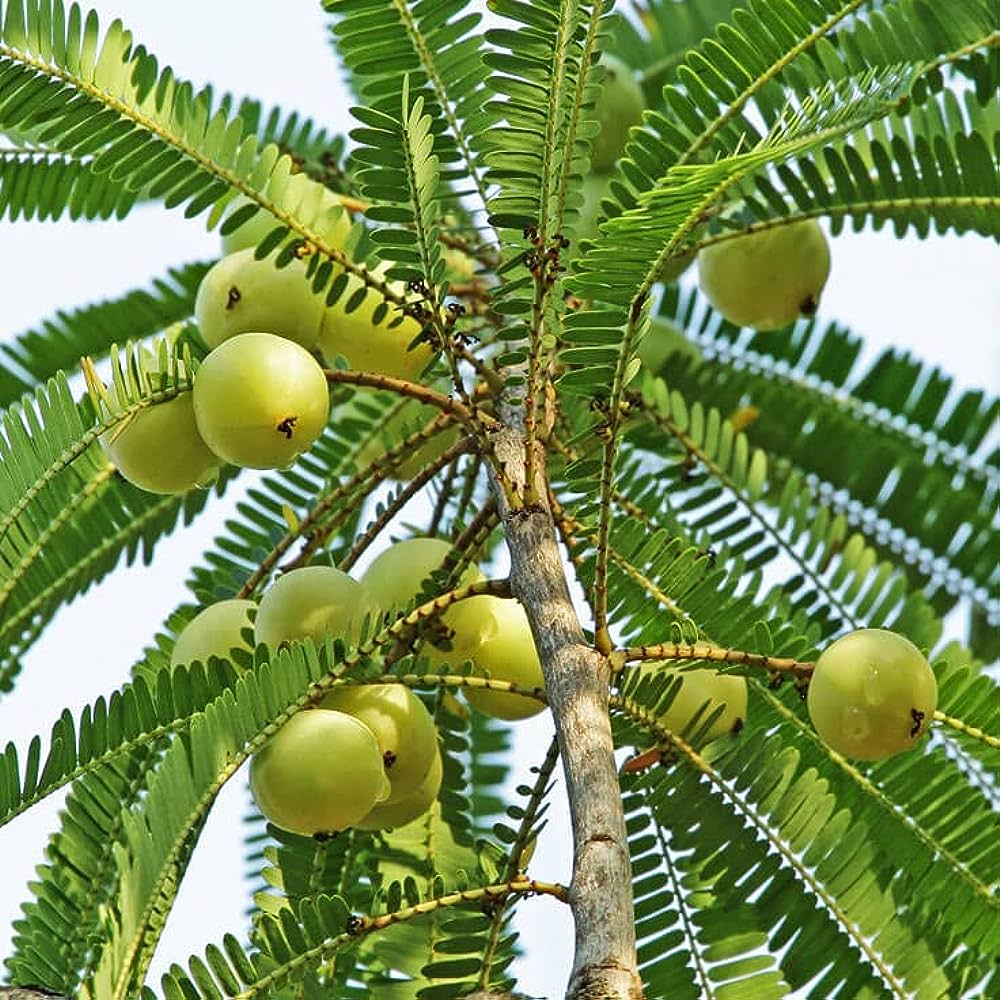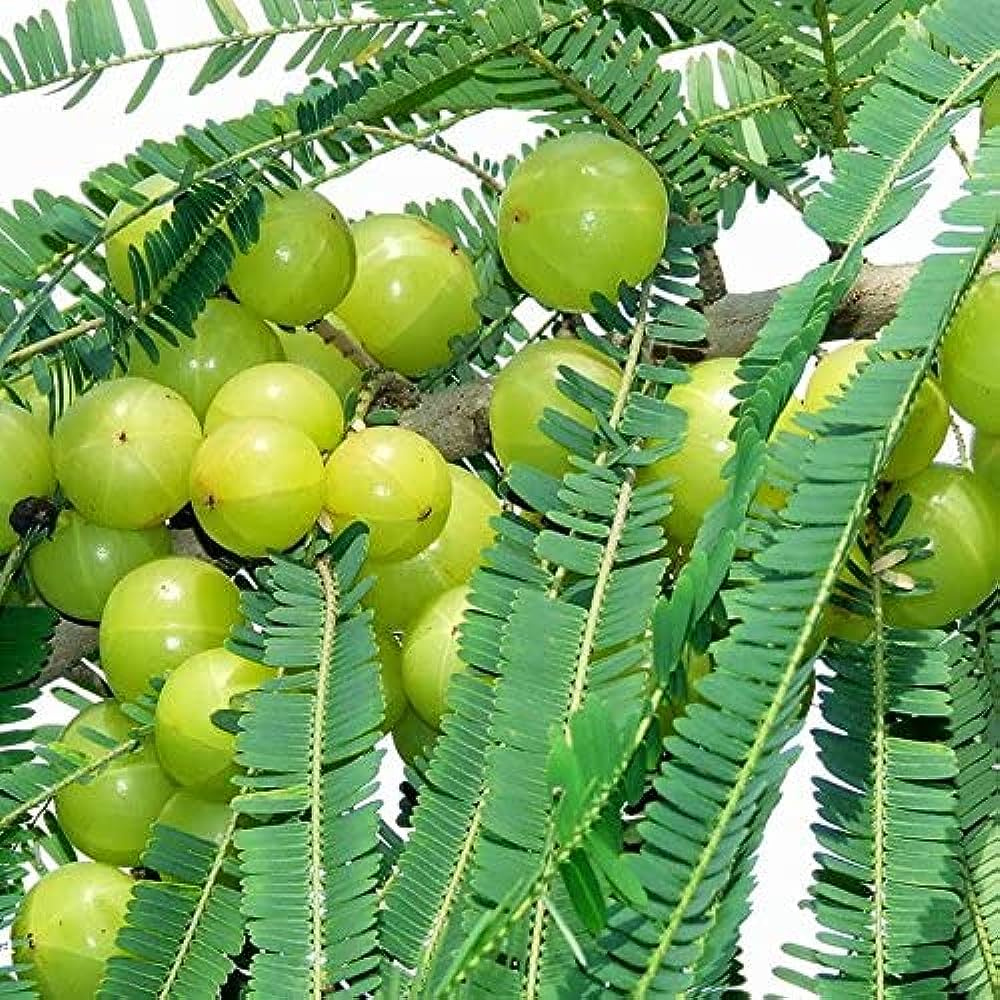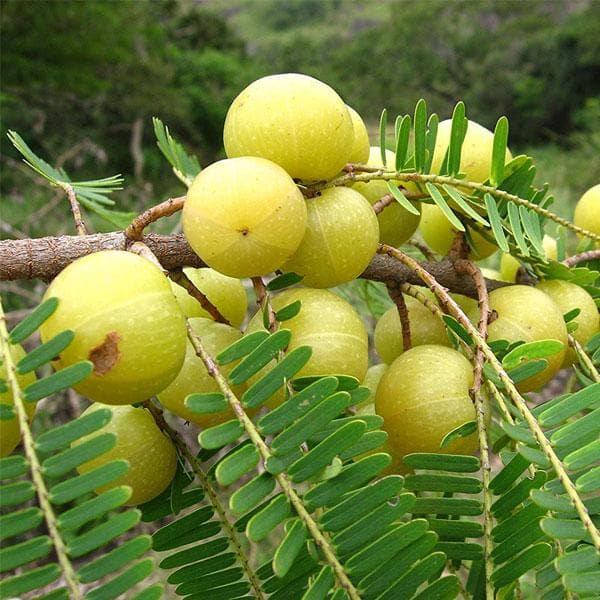Atulya Vanam's Mighty Amla Tree: Unveiling its Healing Treasures Across Medical Traditions
The Amla tree (Phyllanthus emblica), often referred to as the Indian gooseberry, stands as a symbol of vitality and rejuvenation.
Beyond its tangy-sweet fruit, this remarkable tree offers an array of therapeutic benefits through its leaves, fruit, bark, roots, and flowers. In this comprehensive blog, we embark on an enlightening journey to explore the multifaceted uses of the Amla tree across various medical systems, including Modern Medicine, Ayurveda, Unani, Homeopathy, Siddha, and its versatile applications. Additionally, we delve into the distinct Amla varieties found in India.
Medicinal Value
Modern Medicine:
Fruit (Amla): Beyond its distinct flavor, Amla is a rich source of vitamin C and antioxidants, contributing to immune health, collagen synthesis, and overall well-being.
Polyphenols: Amla contains polyphenols like flavonoids and tannins, which have potential health benefits due to their antioxidant and anti-inflammatory properties.
Ayurveda:
Fruit (Amla): Ayurveda hails Amla as a rasayana (rejuvenator) that nourishes all tissues, enhances longevity, and balances all three doshas.
Leaves: Amla leaves are used in Ayurvedic remedies for their potential in managing diabetes and supporting digestive health.
Bark: Amla bark’s astringent properties align with Ayurvedic principles, finding application in addressing diarrhea and promoting oral health.
Unani:
Fruit (Amla): Unani recognizes Amla for its nutritional content, valuing it as a source of energy and wellness.
Homeopathy:
Fruit (Amla): While not a primary ingredient, Amla may be included in homeopathic preparations targeting specific symptoms or health concerns.
Siddha:
Fruit (Amla): In Siddha medicine, Amla is valued for its cooling properties and potential to enhance overall well-being.
General Uses
Culinary Brilliance: Amla fruit is used in a wide range of culinary creations, including pickles, chutneys, juices, and jams.
Natural Hair and Skincare: Amla is renowned for its use in hair care products due to its potential to promote hair growth and lustrous locks. It’s also used in skincare formulations for its antioxidants.
Digestive Health: Amla’s fiber content and digestive properties make it a popular choice for improving digestion and relieving constipation.
Natural Dyeing: Amla’s fruit and bark have been historically used to produce natural dyes.
Amla Varieties in India
Banarasi Amla: Known for its larger size and distinct taste, Banarasi Amla is often used for culinary purposes.
Chakaiya Amla: Treasured for its tangy flavor, Chakaiya Amla is commonly used to prepare amla candy and other products.
Krishna Amla: Characterized by its dark color and intense taste, Krishna Amla is often used in Ayurvedic preparations.
Dilkhush Amla: Renowned for its sweet-tart taste, Dilkhush Amla is enjoyed as a fresh fruit or used in culinary creations.



More about Amla
Amla trees (Phyllanthus emblica), also known as Indian gooseberry trees, possess a range of extraordinary qualities that make them revered in various cultures and medical systems. Here are some intriguing facts about amla trees:
- Sacred and Revered: Amla is considered a sacred tree in Hinduism and holds a special place in Ayurveda, the ancient Indian system of medicine.
- Nutrient Powerhouse: Amla is renowned for its exceptional nutrient content, particularly vitamin C. It contains significantly more vitamin C than most other fruits.
- Adaptability: Amla trees thrive in diverse climatic conditions and can be found growing in a wide range of regions, from tropical to subtropical.
- Medicinal Marvel: In Ayurveda, amla is regarded as a powerful rasayana (rejuvenative) herb known for its potential to enhance immunity, improve digestion, and balance doshas.
- Natural Antioxidant: Amla’s high vitamin C content contributes to its antioxidant properties, which may help combat oxidative stress and support overall health.
- Digestive Aid: Amla is used in traditional medicine to support digestion, alleviate acidity, and promote gut health.
- Culinary Adaptation: Amla can be consumed fresh, dried, or in various culinary preparations, such as chutneys, pickles, and beverages.
- Hair and Skin Care: Amla is used in hair oils and skincare products due to its potential benefits for hair growth, conditioning, and skin radiance.
- Cultural Significance: Amla holds cultural importance in various festivals and rituals in India and is often offered as a symbol of respect and well-being.
- Historic References: Amla has been mentioned in ancient Ayurvedic texts like Charaka Samhita, highlighting its enduring significance.
- Taste Diversity: Amla’s taste can range from sour to astringent, and it is often combined with other ingredients to balance its flavor.
- Medicinal Formulations: Amla is a key ingredient in numerous Ayurvedic formulations, such as Chyawanprash, Triphala, and herbal tonics.
- Environmentally Friendly: Amla trees are environmentally beneficial, promoting soil health and supporting local ecosystems.
- Traditional Preservation: Amla’s natural antioxidant properties make it a valuable ingredient for preserving food and enhancing their shelf life.
- Propagation Methods: Amla trees can be propagated through seeds, cuttings, and grafting, making it accessible to cultivation.
- Global Utilization: Amla’s popularity extends beyond India, as it is recognized for its potential health benefits in various cultures.
- Modern Research: Amla’s medicinal properties have caught the attention of modern research, leading to studies on its potential antioxidant, anti-inflammatory, and immune-modulating effects.
These extraordinary facts showcase the holistic significance of amla trees, from their esteemed position in Ayurveda and cultural practices to their potential health benefits and adaptability to various regions. Amla’s rich heritage and diverse applications continue to make it a remarkable and cherished botanical treasure.
Conclusion
The Amla tree, a symbol of vitality and rejuvenation, exceeds its role as a bearer of tart-sweet fruit. Its leaves, bark, roots, flowers, and versatile applications interweave with a tapestry of medical systems and cultural practices. From Ayurveda’s ancient wisdom to modern medical affirmation, the Amla tree’s offerings flourish. By embracing the union of timeless knowledge and contemporary exploration, we uncover the myriad ways in which the Amla tree enriches our lives—nurturing not only our bodies but also our cultural heritage and the natural environment.
